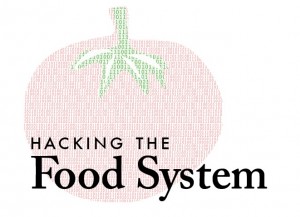[Hacking the Food System is an online conversation exploring how technology, information and data can change the food system status quo. Join the conversation below, on Twitter (hashtag #foodtech), or Facebook.]
The food tech revolution is now underway. Every day we’re seeing new opportunities created for technology to improve the food supply chain, whether it be better farm management, online CSAs or other, crazier ideas that only yet exist in the minds of entrepreneurs.
There’s one specific portion of the food supply chain that I’m personally most excited about: the final link, where food is placed into the waiting hands of consumers who then take it home and create a meal for their family, friends or just themselves.
It may sound simplistic, but the one thing we can do there to help change the food system status quo is to get more people cooking, more often, and more enjoyably.
I’ve been fortunate to have spent a lot of time in Japan over the past several years. Cooking meals firsthand in a different culture is an eye-opener. At local grocery stores in Tokyo, I noticed that very few prepackaged frozen foods are available (ice cream and desserts excepted). I guess they’re just not in demand. Contrast this with my local Safeway here in California, which has several freezer cases, each a hundred feet long, full of every variety of prepackaged food imaginable. This is a visible reminder that many folks in the U.S. still don’t cook regular meals with fresh ingredients.
One reason is, simply, lack of time. Here’s were technology comes into play. New ventures on the physical delivery end of the supply chain are targeting those busy-professional consumers who tend to avoid cooking because of time constraints. Ernie’s, a “Click & Collect” grocery where shopping is done exclusively online, is opening a pilot store in Memphis in 2012. Yupeat is another startup that offers meal ingredients, pre-purchased, bagged and ready to go. And in the app space, Food on the Table and others are making meal planning ever easier, and a viable time-saving option.
Time aside, there are still many people for whom cooking with fresh ingredients is just not enjoyable enough to compete with the microwave (difficult as this may be for those in the foodtech industry to comprehend). It’s too hard to find a recipe they like; it’s no fun to cook alone; they don’t know the right ingredients to buy; and so on. Technology has given us ample tools to address these challenges. For example:
– With the new breed of recipe discovery/search engines, it’s no longer a chore to find high quality, easy to cook recipes, especially by tapping into the wealth of incredible content created by the food blogger community.
– Photo-sharing apps like Instagram are an enormous benefit to cooking and food because they implicitly encourage people to share pictures of meals they’ve cooked. The “reward” of showing off a tasty dish you just made is innate; it’s almost a form of game mechanics. (Now we just need an “Instagram for cooking” that links directly to recipes.)
– Mobile devices, well on their way to becoming universal, enable us to gather information about ingredients at the point of purchase in ways that were never possible before. ShopWell and Consmr are examples of apps innovating in this space. Another anecdote from Japan: it’s common for supermarkets in Japan to display pictures and information about farmers next to produce items. How cool would it be to take out your iPhone and scan a QR code next to a tomato at Whole Foods, and bring up the farmer’s bio?
Our food system has much to gain from getting more people actively involved in cooking regular home meals from fresh ingredients. More “mindshare” means more people invested in the quality of their food and voting with their wallet. It means a larger customer base for local and sustainable food products, and fewer consumers of factory-made, pre-packaged food. It leads to more people, together, sharing and enjoying a meal they’ve made with their own hands. And that certainly beats the microwave.
_______________
Related articles
- Joanne Wilson on Hacking the Food System (foodandtechconnect.com)
- Hilary Mason on Hacking the Food System: The Story of the Ultimate Cookie (foodandtechconnect.com)
- Bo Fishback on Hacking the Food System: It’s Different This Time (foodandtechconnect.com)
- Ali Partovi on Hacking the Food System: Focus on the Supply Chain (foodandtechconnect.com)
- Bill Niman on Hacking the Food System (foodandtechconnect.com)
- Marcus Samuelsson on Hacking the Food System: Taking Food to a Whole New Level (foodandtechconnect.com)
- Punchfork’s Innovative Web Search Business Model: Using Social Data to Personalize Recipe Search (foodandtechconnect.com)
- Ryan Charles on Hacking the Food System: One Aisle Supermarket? (foodandtechconnect.com)
- Stefani Bardin on Hacking the Food System (foodandtechconnect.com)
- Dickson Despommier on Hacking the Food System (foodandtechconnect.com)





